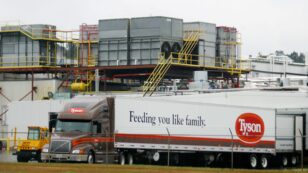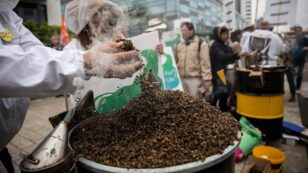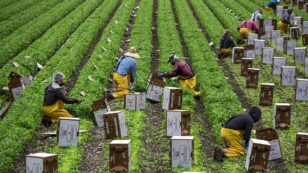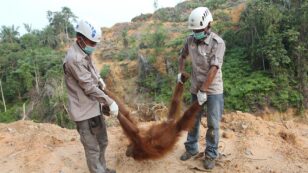
What Is the Most Sustainable Way to Make Coffee? The Answer Might Surprise You
What is the least sustainable way to drink your morning coffee?

What is the least sustainable way to drink your morning coffee?

By Jessica Corbett Public health experts and labor rights advocates celebrated Wednesday after the Biden administration announced that it “will stop the use of the pesticide chlorpyrifos on all food to better protect human health, particularly that of children and farmworkers,” following decades of demands for government intervention spurred by safety concerns. The Environmental Protection […]

By Karen Perry Stillerman A few years back, the nation’s largest meat and poultry company used the slogan “Powered by Tyson” to sell its chicken, pork, and beef. Tyson Foods’ marketing language has since changed, but the notion of “power” is more apt than ever when it comes to the way this company operates. As […]

With #PlasticFreeJuly upon us, there has been a necessary, global focus on curbing plastic pollution and other trash that comes from land and often ends up in the sea. Now, in partnership with Plastic Oceans International, EcoWatch is highlighting the dangers of another land-based source of ecological harm: runoff. According to the United States Geological […]

By Derrick Z. Jackson With its “Waters of the United States” rule, President Obama’s administration enacted unprecedented protections of rivers and streams. The Trump administration, ignoring science and the importance of wetlands, tried to return many of those waterways back to polluters by rolling back the Waters of the US rule. Now Michael Regan, President […]

By Jessica Corbett A coalition of 80 U.S. agricultural, consumer, environmental, public health, and worker groups sent a letter Thursday to key figures in the Biden administration calling for them to “respect Mexico’s sovereignty and refrain from interfering with its right to enact health-protective policies” — specifically, the phaseout of the herbicide glyphosate and the […]

By Andrea Germanos Despite lower applied amounts of pesticides in U.S. agriculture, their toxicity to non-target species including honeybees more than doubled in a decade, according to a new study. The findings by a team of researchers from Germany’s University Koblenz-Landau were published Friday in the journal Science. “We have taken a large body of […]

By Iris Figueroa and Amy K. Liebman COVID-19 is having disproportionate impacts on our nation’s two million farmworkers, who as essential workers continue to toil in the fields despite numerous deadly outbreaks and no federal COVID-related workplace protections. COVID-19 has pulled back the veil on the strikingly poor workplace conditions of these essential workers, built […]

By Ajit Niranjan The way food is grown around the world threatens 24,000 of the 28,000 species that are at risk of extinction, according to a report published Wednesday that calls on world leaders to urgently reform the global food system. Plants and animals are dying out at a rate that is at least tens […]